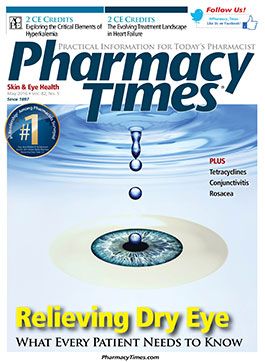Publication
Article
Pharmacy Times
Lawsuit Over Pharmacy Monograph Patient Information Sheets
Author(s):
Following development of a severe adverse reaction to a prescription medication, a patient filed a lawsuit against the physician who prescribed it, the manufacturer of the product, and the pharmacy chain where she obtained it.
ISSUE OF THE CASE
Following development of a severe adverse reaction to a prescription medication, a patient filed a lawsuit against the physician who prescribed it, the manufacturer of the product, and the pharmacy chain where she obtained it. Can she also maintain a lawsuit against the information technology firm that handled capabilities to print out the patient information sheet she received at the pharmacy as a supplement to the medication labeling?
FACTS OF THE CASE
A woman living in a western state was prescribed an anticonvulsant medication and experienced severe adverse effects because of its interaction with another medication she was taking. The result of the combination was complete blindness, along with permanent, severe, and painful scarring from Stevens- Johnson syndrome (SJS). Afterward, the woman and her husband learned that the prescribed medication carried a significant risk of causing SJS and associated toxic epidermal necrolysis, particularly when taken in combination with another of her prescribed medications.
The patient acknowledged that the monograph supplied when the medication was dispensed bore a summary of package insert information and a relevant patient medication guide mandated by the FDA. She also acknowledged that the monograph was written in nontechnical, lay language so patients and caregivers could understand the information. The monograph was characterized as a written supplement to the oral counseling patients receive from pharmacists when the medication is dispensed. However, a major difference was acknowledged: unlike package inserts or medication guides that are reviewed and approved by the FDA, a pharmacy monograph patient information sheet is not reviewed or regulated by the FDA. However, a federal statute recognizes such unofficial documents as part of a “self-regulating action plan” designed to improve patient access to useful information about medications.
At the heart of this matter was a decision by the pharmacy chain about the contents of the patient information sheet. Prior to 2005, the pharmacy that subscribed to the database of information sheets could print out a 5-section version or an 8-section version. The shorter version omitted sections with these headings: “Before Using this Medication,” “Overdose,” and “Additional Information.”
In 2005, the software firm revised its software so that the abbreviated version could no longer be printed out at the pharmacy. The pharmacy chain told the information technology (IT) contractor that it wished to use only the abbreviated, 5-section version. The software firm complied with that request, but only after receiving a release of liability and an indemnification agreement from the chain.
The Before Using this Medication section for the product implicated here contained warnings about drug interactions and complications due to coexisting health conditions. The version received by the plaintiff omitted a Black Box Warning that had been in the Before Using this Medication section that stated “Serious and sometimes fatal rashes have occurred rarely with the use of this medicine.”
The lawsuit alleged negligence by the software firm in agreeing to the abbreviation of information. In response to the lawsuit, the attorneys for the IT firm made a motion with the trial court that the lawsuit be dismissed. The trial court denied that motion, and the software company appealed to a state court of appeals.
THE COURT’S RULING
The appellate court agreed with the trial court that the matter should not be dismissed before trial. It concluded that there were a number of questions to be answered by a jury following a trial.
THE COURT’S REASONING
The court focused on the act of the IT firm in reprogramming its software to permit the pharmacy chain to distribute the abbreviated, 5-section monograph that omitted the Black Box Warnings. This, in the view of the court, differentiated this case from an earlier one in which it was ruled that a software firm had no legal duty extending to a patient who received a medication monograph through the firm’s software.
There was evidence in the court record indicating that the IT firm knew that enabling the software to print out the more abbreviated form of the document could place patients at risk. In fact, the court pointed out an acknowledgment in the 2005 agreement between the IT firm and the pharmacy chain, in the release of a liability/indemnification document, that providing the full 8-section version would better enable patients to avoid harm than the 5-section version would.
Dr. Fink is a professor of pharmacy law and policy and the Kentucky Pharmacists Association Endowed Professor of Leadership at the University of Kentucky College of Pharmacy, Lexington.







